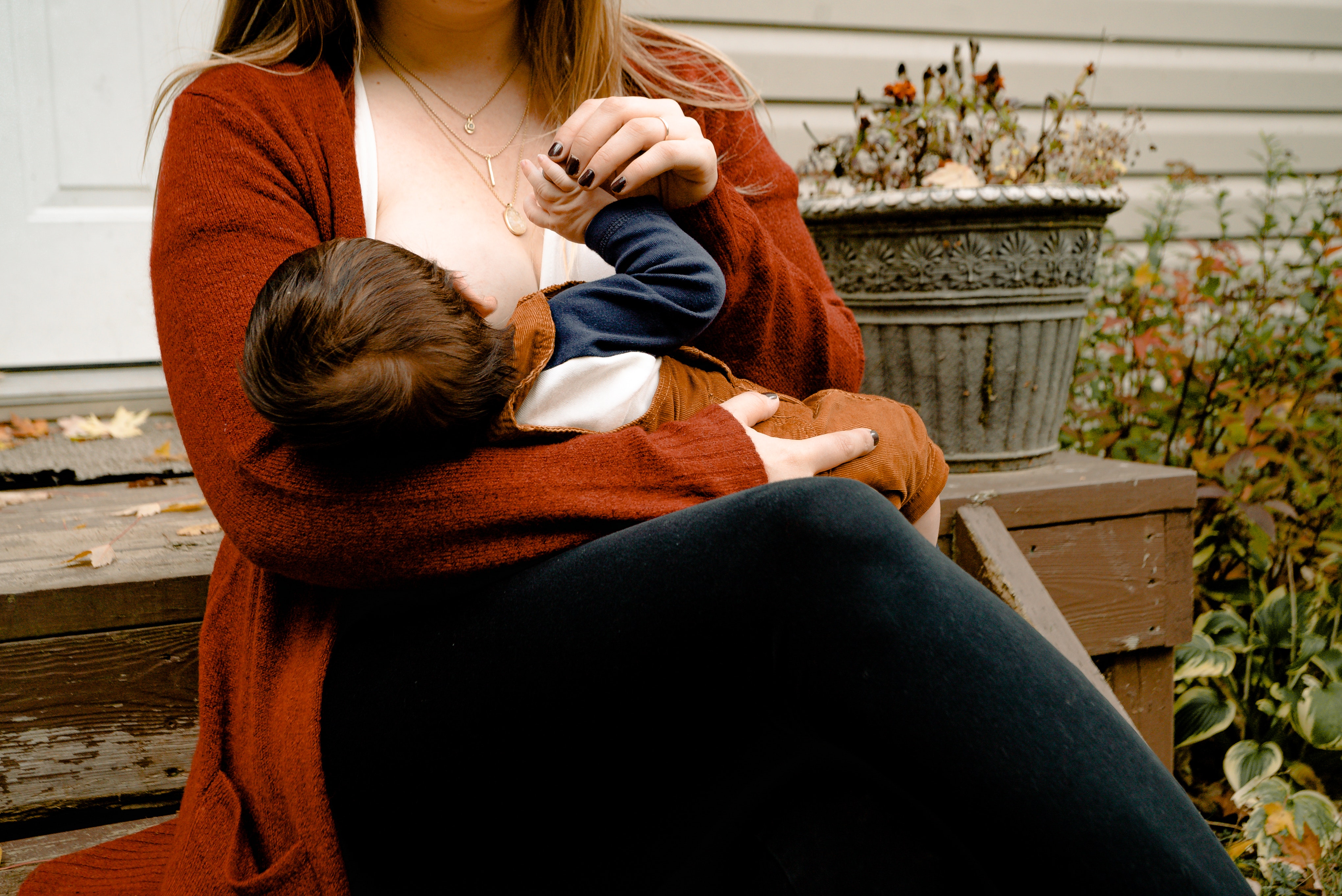Published Date January 24, 2003
Breastfeeding (Part-3)
By Hetvi Shah
4 min read
Last update date: January 24, 2003
Prolactin acts on the alveoli and signals breasts to start producing milk. While oxytocin signals the muscles near the alveoli to squeeze the milk out through the lactiferous ducts which then open up through the nipple.

Though breastfeeding comes naturally to both mother and child, opting for breastfeeding is not an easy task to commence and advance. It takes a lot of effort from the mother’s end to keep the process going until the child demands it.
This blog might make it easier for all new and potential mothers.
When and for how long should a baby be breastfed?
In most cases, the mother feeds the baby every 2-3 hours even if the baby is not hungry.
This happens because the mother does not want to leave the baby unfed for long periods. The baby should only be fed when she demands to be fed and not every few hours. Each breastfeeding session can last anywhere from 4-30 minutes.
Night feeds
After doing all the chores for the day and also breastfeeding the baby several times, the mother surely becomes tired at night and wants a peaceful, uninterrupted sleep. But the baby demands to be fed at night too. Feeding at night will help the mother and child to be able to bond, increase the production of milk, and will make the mother feel relaxed for the rest of the next day.
Role of oxytocin and prolactin
“The more the suckling, the more the milk production”. The baby helps in making more milk by suckling. The more milk the baby drinks, the emptier the mother’s breasts will be in turn producing more milk. When the baby starts suckling, it sends a signal to the brain, which further signals the hormones oxytocin and prolactin to be released.
Prolactin acts on the alveoli and signals breasts to start producing milk. While oxytocin signals the muscles near the alveoli to squeeze the milk out through the lactiferous ducts which then open up through the nipple.
What is a correct latch?
Most mothers think that the baby is getting milk from only the nipples but when the baby suckles through the areola, he/she gets more milk than from the nipples. This causes the nipples to crack and become sore. Nipples are only the opening for the milk to be poured out from the breast. The milk supply comes from lactiferous ducts that store the milk in the breast. These ducts are present in the areola region - the dark circular part surrounding the nipple.
So, instead of filling the baby’s mouth with only the nipple, filling it with the areola portion would be good - for the baby to suckle well and the mother will not suffer from sore or cracked nipples.
Four signs of a good latch:
- The baby’s mouth is wide open (looks like a mouth full of food).
- Her lower lip is turned outwards.
- The Chin and tip of the nose are touching the breast.
- More of the lower part of the areola is in the mouth.
Correct positioning
There is no correct positioning as such, the position in which both the mother and the baby are comfortable is the correct position. Below mentioned are a few points that can help mothers -
- It is suggested the baby be held close to the mother’s body.
- The baby's entire body could be turned towards the mother (ear, shoulder and back in a straight line).
- Not just the neck but the whole body must be supported.
- It is generally a good idea if the mother positions herself comfortably while feeding. Her shoulders should not be drooping and she should not be bending down towards the baby.
- Both the mother and the baby must look at or communicate with each other.
A few positions that the mothers might want to give a try -
- Cross cradle hold - Holding the baby’s head with the hand opposite to the side that is used for nursing. The mother’s wrist should be behind the baby’s shoulder blades, the thumb under one ear and the fingers under the other. The other hand could be used to support the breast.
- Football hold - This position works well when the mother has undergone a c-section. Use the hand on the side of the breast that’s nursing to lift the baby’s head to the nipple while the baby’s body is turned towards the mother. A nursing pillow could be used if needed.
- Side-lying position - Mother and the baby both lay on their sides. The mother will then use the hand she is not laying on to hold the breast. This might be helpful during the night feeding sessions.
- Laid-back position - The mother should be laid back with her head, neck, and shoulders supported. Place the baby’s whole front on the mother’s front, and place the baby’s cheek on the bare breast.
Takeaway
No mother can be more paranoid to give her child the best head start in life than a new mother. Facing any difficulties while breastfeeding, can be avoided if the mother is aware of how to position the baby and attach her to the breast correctly. If the mother still faces difficulty, counselling is something that can really help. To know more about breastfeeding read the rest of our blogs in the breastfeeding series.
References
- https://wicbreastfeeding.fns.usda.gov/how-breast-milk-made#:~:text=Role%20of%20Your%20Breasts,the%20milk%20through%20the%20breast.
- https://www.cdc.gov/nutrition/InfantandToddlerNutrition/breastfeeding/recommendations-benefits.html
- https://www.whattoexpect.com/first-year/breastfeeding/things-to-know-about-breastfeeding-newborn/
- https://my.clevelandclinic.org/health/articles/8330-breast-anatomy#:~:text=Areolae%3A%20The%20areola%20is%20the,skin%20from%20chafing%20during%20breastfeeding.
- https://www.verywellfamily.com/the-milk-ducts-431828#:~:text=The%20milk%20ducts%2C%20also%20called,ducts%20located%20in%20your%20breast.
Choose Healthy With Us.
Know the real truth about your food. Stay informed and healthy, for free.

Download the App Now
Certified nutritionists trust our food recommendations. Safe to say, so can you :)










